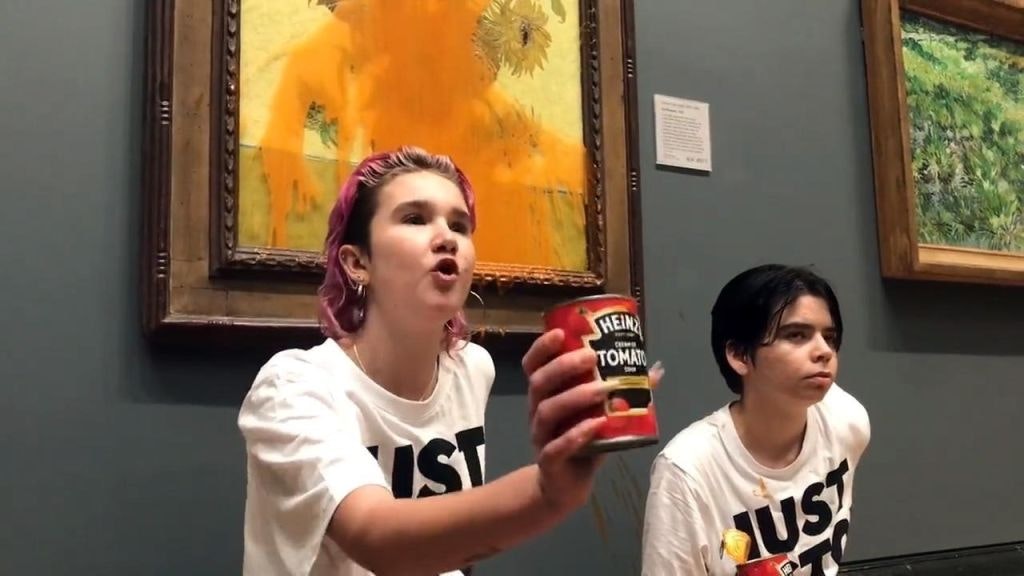Gays against the conversion therapy ban
Gay men oppose these proposals not in spite of being gay, but because they are gay
Gay men against the conversion therapy ban? Is it April already? Or just a bunch of self-hating homosexuals who think electrodes, beatings and prayer are the best way to protect kids from the lifestyle they failed to escape?
Neither. We are a group of gay men and their supporters who have submitted a detailed response to the government consultation on the proposed conversion therapy bill. We oppose these proposals not in spite of being gay; we do so because we are gay.
Gender identity is nebulous and lacks any stable definition
Our concern arises from the way the bill has changed since its inception. As originally drafted, the bill would have outlawed the outmoded and futile practice of trying to change a person’s sexual orientation. While nowadays gay CT is largely a marginal problem, a ban is a laudable aim which sends an important message. However, after pressure from Stonewall and other trans charities, the bill was extended to include “gender identity”. Why then should gay men, including some who have endured CT themselves, applaud one ban but oppose the other?
To understand, we need to consider the concepts at the heart of the proposal. While homosexuality is easily defined, gender identity is nebulous and lacks any stable definition that is not either self-referential or predicated on regressive stereotypes. Its nature can only be determined by people claiming to have it and, according to the dogma, it can change many times throughout the course of a person’s life. Most fundamentally, it is totally disconnected from one’s physical sex.
Despite its resistance to definition, the disastrous effects of gender identity ideology are well documented. In 2010/11, 138 children and adolescents were referred to the Gender Identity Development Service (GIDS); this had risen to 2,748 by 2020/21. Numbers, which had been climbing relatively slowly, took a sudden and dramatic spike around 2015 particularly among females, with the number of girls presenting at GIDS rising by 5,337 per cent between 2009-2019. Many of these young people will embark upon a pathway of experimental medicalisation, including puberty blockers, cross-sex hormones and, for some, invasive and irreversible surgery.
Society is sleepwalking into a scandal of historic proportion
These “treatments” are still in their infancy, but they all result in profound, irreversible and often deeply-regretted physical changes — a sad reality underscored by the growing number of people who detransition but are left with the scars of their earlier decisions. Beware anyone who claims to have a definitive answer on the effectiveness or otherwise of transition; this phenomenon is so recent that there are no large cohort studies that give anything approaching a definitive answer. (This situation is not helped by GIDS’ failure to keep accurate records on patients’ competency, capacity and consent, or to follow up with young people who left the treatment pathway.)
Nevertheless, what data there is suggests that the evidence base for transition is sketchy-to-nonexistent: the biggest study to-date, for example, “demonstrated no advantage of surgery in relation to subsequent mood or anxiety”. In fact the available evidence, replicated in numerous studies, has found that most children desist and grow up to be gay and lesbian adults.
As gay men, we feel that society is sleepwalking into a scandal of historic proportion, one where thousands of young gay and lesbian people are taking steps that will leave them mutilated and sterilised. We know that by saying this we will be dismissed by trans activists as greying Gen X-ers, blinded by bigotry, traitors to the LGBTQ+ cause. But we are not lone voices: in 2019 clinicians at GIDS (as well as governor Marcus Evans) resigned en masse in protest at issues including over-diagnosis, fast-tracked treatment and failures to challenge homophobic parents seeking to change gay sons into trans daughters.
If you genuinely abhor conversion therapy, take a minute to reflect on the concerns of GIDS whistleblowers who said that the pressure by parents and trans charities to medicate physically healthy, likely homosexual young people “felt like gay conversion therapy”. Or consider the dark joke circulating around the clinic, that soon “there would be no gay people left”.
Stonewall has been searching for new dragons to slay
In spite of these concerns, trans charities such as Mermaids, Gendered Intelligence and Stonewall have lobbied hard — and so far, largely successfully — for the “affirmation-only” approach, where any young person expressing discomfort with their gender identity must be affirmed in their delusion that they are the opposite sex, or “born in the wrong body”. These groups are determined to outlaw any therapy that might explore and explain a person’s dysphoria — for example, internalised homophobia, histories of sexual abuse, mental illness or autistic spectrum disorders.
How did we get here? As gay men we have watched, horrified, as former LGB charities have pursued a regressive and homophobic ideology, fought largely on the battleground of children’s bodies.
Since winning most of its battles for gay equality, Stonewall has been searching for new dragons to slay, which is why since 2015 it has focused increasingly on the “T” to the detriment of boring old LGB. This pivot has not gone unnoticed or unchallenged: Stonewall has come under the microscope in the last year, its embattled CEO Nancy Kelley making increasingly bizarre public statements including comparing criticism of gender ideology with anti-semitism and branding lesbians “sexual racists” for refusing to consider dating males.
Stonewall clearly saw banning conversion therapy as a much-needed reputation boost, proof that even after its annus horribilis it could still influence public policy. Indeed, it still wields tremendous clout: although it was unsuccessful in lobbying for there to be no consultation at all, it seems to have influenced the restriction of the consultation period to six weeks rather than the customary twelve.
Why are children distressed at the idea that they may be same-sex attracted?
The government meanwhile seems to have considered this proposed legislation as a quick and easy win to show off at the global LGBT conference it’s hosting next year. They may have thought this would be as uncontroversial as a ban on meerkat-baiting, and quite possibly a way to burnish their “queer” credentials while atoning for the original sin of Section 28. We say that this bill would do more damage to gay and lesbian people than that petty piece of legislation ever did.
All is not lost. The government announced an extension to the consultation period; even more encouragingly, there are whispers that ministers are considering dropping gender identity from the bill until a fuller investigation can be carried out. We hope that our submission, along with other responses such as those from LGB Alliance and parents’ group Our Duty, will convince the government to press pause on this ill-conceived and dangerous proposal.
Instead of rushing to ban talking therapies for distressed young people, what we really need is an inquiry into why so many people — particularly girls and young women — are suddenly disconnected from their sexed bodies. Similarly, we urgently need to know why children are distressed at the idea that they may be same-sex attracted, especially at a time when it has never been easier to be so.
Stonewall, which is now dedicated to protecting fantasy over sexuality, will surely block any attempt to investigate a phenomenon that does such horrific and permanent damage to lesbian and gay youth. Many gay men who can remember rampant homophobia feared it would raise its ugly head again. None of us thought it would return draped in the rainbow flag, championed by the charities that once worked to protect us.
Enjoying The Critic online? It's even better in print
Try five issues of Britain’s most civilised magazine for £10
Subscribe














